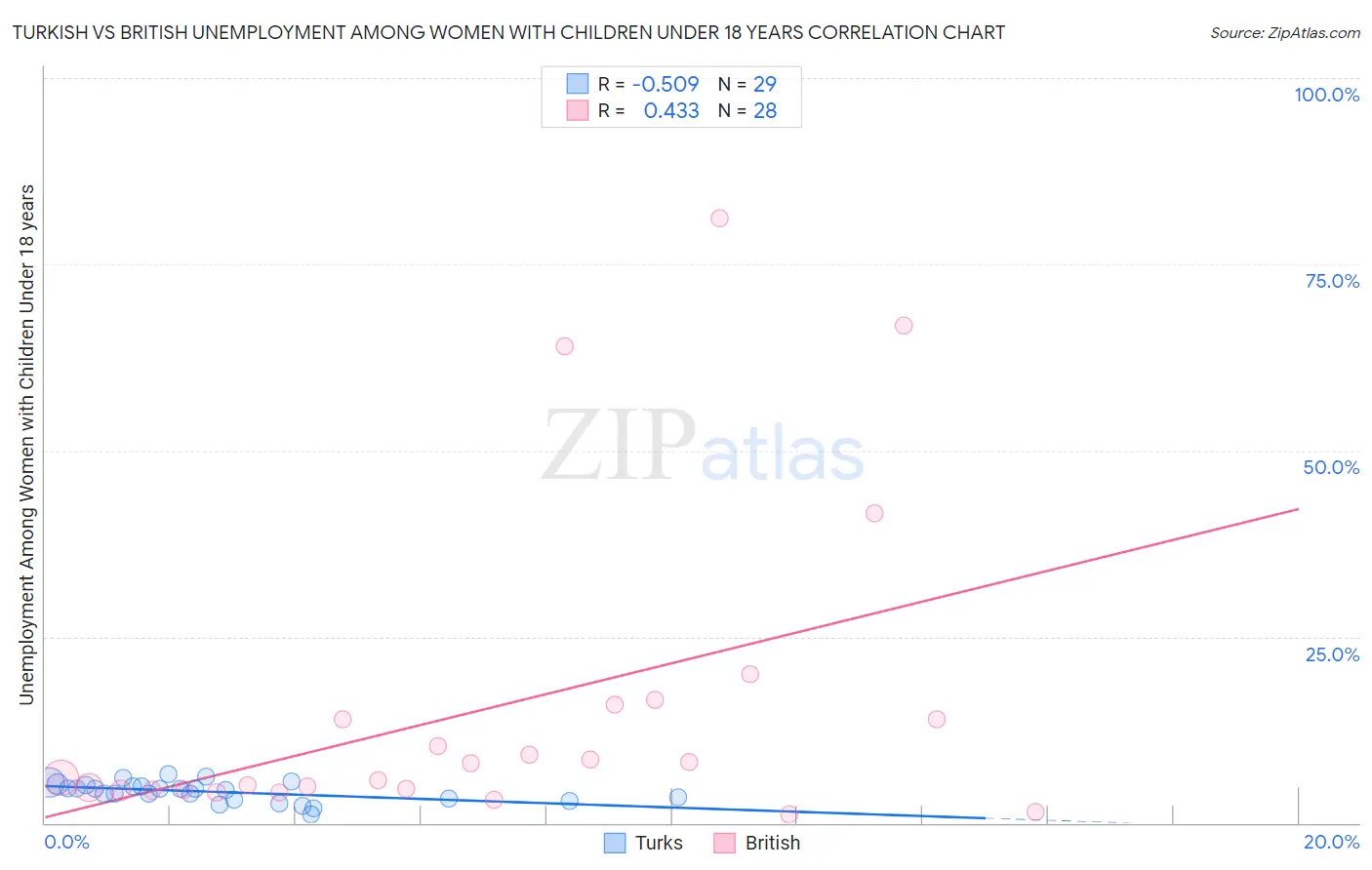Turkish vs British Unemployment Among Women with Children Under 18 years
COMPARE
Turkish
British
Unemployment Among Women with Children Under 18 years
Unemployment Among Women with Children Under 18 years Comparison
Turks
British
5.0%
UNEMPLOYMENT AMONG WOMEN WITH CHILDREN UNDER 18 YEARS
98.9/ 100
METRIC RATING
43rd/ 347
METRIC RANK
5.0%
UNEMPLOYMENT AMONG WOMEN WITH CHILDREN UNDER 18 YEARS
98.7/ 100
METRIC RATING
47th/ 347
METRIC RANK
Turkish vs British Unemployment Among Women with Children Under 18 years Correlation Chart
The statistical analysis conducted on geographies consisting of 264,750,560 people shows a substantial negative correlation between the proportion of Turks and unemployment rate among women with children under the age of 18 in the United States with a correlation coefficient (R) of -0.509 and weighted average of 5.0%. Similarly, the statistical analysis conducted on geographies consisting of 489,601,986 people shows a moderate positive correlation between the proportion of British and unemployment rate among women with children under the age of 18 in the United States with a correlation coefficient (R) of 0.433 and weighted average of 5.0%, a difference of 0.38%.

Unemployment Among Women with Children Under 18 years Correlation Summary
| Measurement | Turkish | British |
| Minimum | 1.1% | 1.1% |
| Maximum | 6.6% | 81.2% |
| Range | 5.5% | 80.1% |
| Mean | 4.2% | 15.6% |
| Median | 4.6% | 7.0% |
| Interquartile 25% (IQ1) | 3.2% | 4.5% |
| Interquartile 75% (IQ3) | 5.0% | 14.9% |
| Interquartile Range (IQR) | 1.8% | 10.5% |
| Standard Deviation (Sample) | 1.3% | 21.1% |
| Standard Deviation (Population) | 1.3% | 20.7% |
Demographics Similar to Turks and British by Unemployment Among Women with Children Under 18 years
In terms of unemployment among women with children under 18 years, the demographic groups most similar to Turks are Eastern European (5.0%, a difference of 0.050%), Immigrants from Moldova (5.0%, a difference of 0.060%), Immigrants from Bosnia and Herzegovina (5.0%, a difference of 0.13%), Immigrants from Malaysia (5.0%, a difference of 0.14%), and Greek (5.0%, a difference of 0.19%). Similarly, the demographic groups most similar to British are Immigrants from Korea (5.0%, a difference of 0.13%), Northern European (5.0%, a difference of 0.13%), Immigrants from Malaysia (5.0%, a difference of 0.24%), Immigrants from Moldova (5.0%, a difference of 0.32%), and Lithuanian (5.0%, a difference of 0.35%).
| Demographics | Rating | Rank | Unemployment Among Women with Children Under 18 years |
| Luxembourgers | 99.2 /100 | #35 | Exceptional 5.0% |
| Mongolians | 99.2 /100 | #36 | Exceptional 5.0% |
| Poles | 99.2 /100 | #37 | Exceptional 5.0% |
| Bhutanese | 99.2 /100 | #38 | Exceptional 5.0% |
| English | 99.1 /100 | #39 | Exceptional 5.0% |
| Greeks | 99.0 /100 | #40 | Exceptional 5.0% |
| Immigrants | Bosnia and Herzegovina | 99.0 /100 | #41 | Exceptional 5.0% |
| Eastern Europeans | 98.9 /100 | #42 | Exceptional 5.0% |
| Turks | 98.9 /100 | #43 | Exceptional 5.0% |
| Immigrants | Moldova | 98.9 /100 | #44 | Exceptional 5.0% |
| Immigrants | Malaysia | 98.8 /100 | #45 | Exceptional 5.0% |
| Immigrants | Korea | 98.7 /100 | #46 | Exceptional 5.0% |
| British | 98.7 /100 | #47 | Exceptional 5.0% |
| Northern Europeans | 98.6 /100 | #48 | Exceptional 5.0% |
| Lithuanians | 98.4 /100 | #49 | Exceptional 5.0% |
| Immigrants | Japan | 98.4 /100 | #50 | Exceptional 5.0% |
| Yugoslavians | 98.3 /100 | #51 | Exceptional 5.1% |
| Immigrants | Nepal | 98.3 /100 | #52 | Exceptional 5.1% |
| Scottish | 98.2 /100 | #53 | Exceptional 5.1% |
| Immigrants | Serbia | 98.2 /100 | #54 | Exceptional 5.1% |
| Immigrants | Sri Lanka | 98.1 /100 | #55 | Exceptional 5.1% |